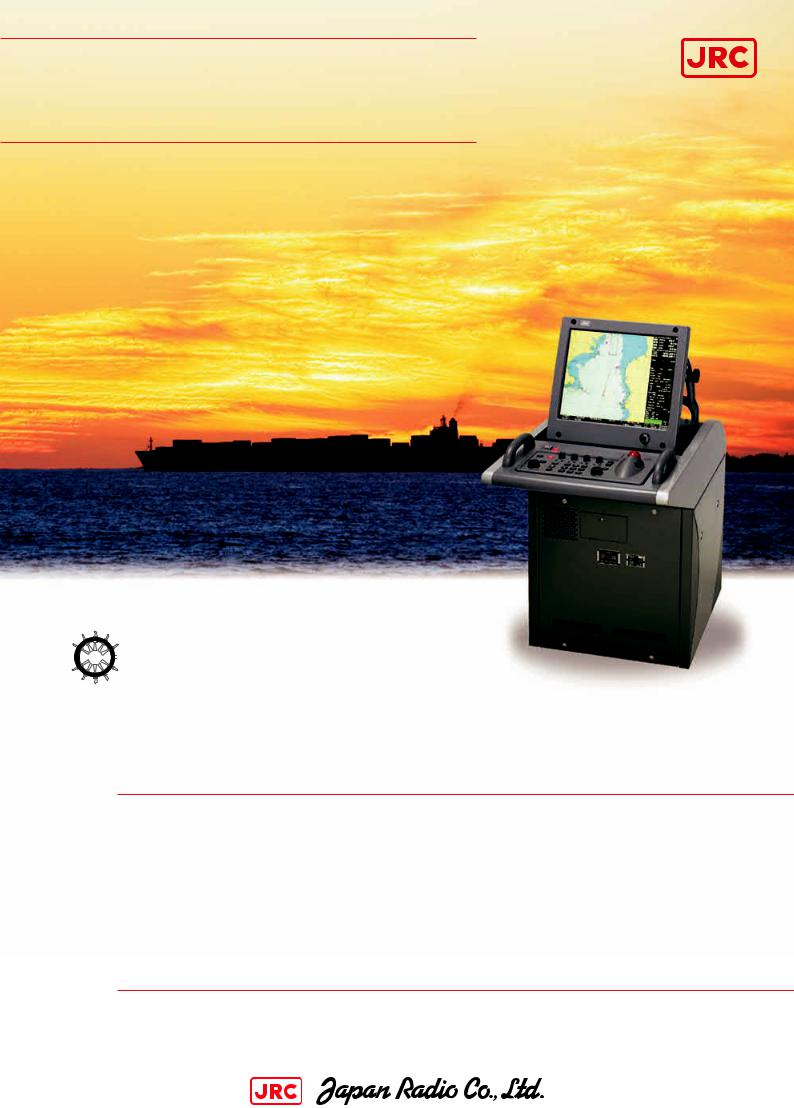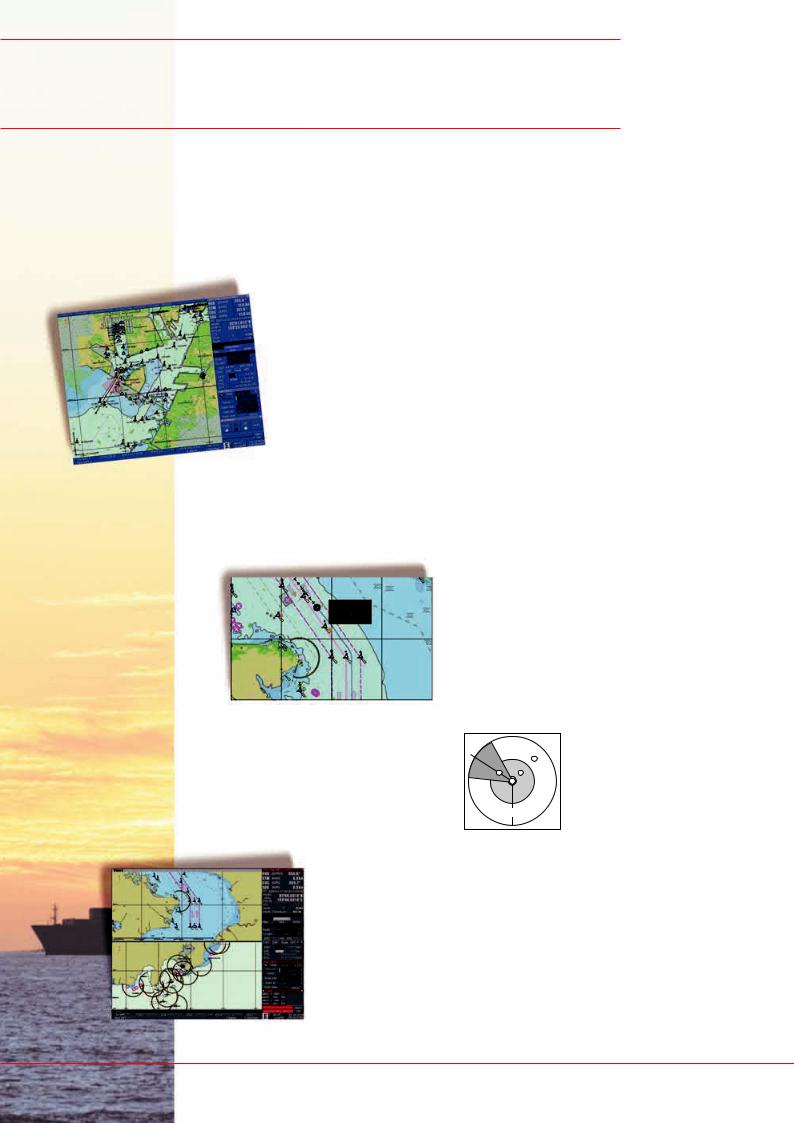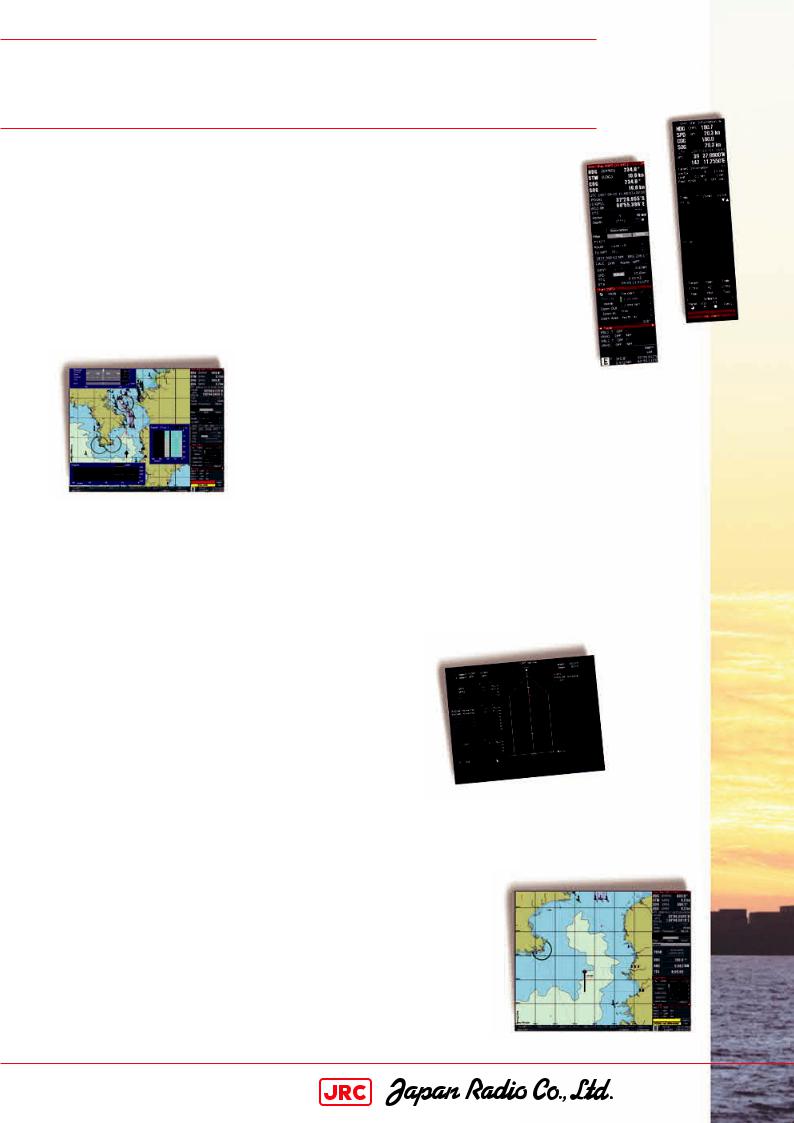JRC JAN-701B Manual

JAN-701B
ECDIS
Complies with new SOLAS regulations




 MSC 232(82) performance standard for
MSC 232(82) performance standard for
ECDIS, effective from 1 January 2009.
– introducing an economically designed ECDIS, bringing simplicity to life at sea
19” high visibility LCD screen Simultaneous real-time radar & AIS overlay Advanced route planning
Multiple and wide screen viewing High-speed graphic processor

JAN-701B
– performance features
Unique features
 The JAN-701B is a newly developed multi-functional ECDIS. It is ergonomically designed to enhance the working environment and man/machine interfaces, providing continuous position and navigational safety information.
The JAN-701B is a newly developed multi-functional ECDIS. It is ergonomically designed to enhance the working environment and man/machine interfaces, providing continuous position and navigational safety information.
Radar overlay
The JRC JAN-701B offers practical radar usage with ECDIS, more than just overlaying a rough radar image. The radar image has a high resolution when interfaced with JRC radars. The radar image does not hide the priority objects of vector charts, but overlays them on the radar image. At the same time, brilliance and clutter controls of the radar images continues to be operable.
AIS targets
The AIS is an important key device used to indicate AIS target symbol and information on the ECDIS. These targets are very useful, as it provides the maneuvering conditions of other ships at a glance, allowing for safe and effective navigation. The name of
the vessels, and bearing, range, speed, length, heading and much more AIS target specifics from other ships are received and displayed. The AIS symbols are continuously displayed on-screen without the influence of the radar characteristics. The AIS targets are never shielded by ground, rain or cloud reflections, nor are they eliminated by adjustments of anti-sea or anti-rain clutter.
Also, it is easy to activate, deactivate and switch between AIS target symbols. This simply can be done with an integrated AIS filter, prioritising the targets within a dedicated area.
|
3 |
4 |
2 |
|
1 |
|
120nm |
1.vessels’ position
2.ring area
3.sector area
4.heading area
Multi-view
Multiple and wide screen viewing is possible with the new JAN-701B. You can divide the chart screen into two sections, in which the same or different charts can be displayed, in a mixture of ways. In this field of view, it provides a ‘look-ahead’ capability, especially useful in coastal areas. With the wide screen view function, an additional screen in the display area, showing a segment of the chart, allows viewing at a glance.
JAN-701B ECDIS – a newly developed multi-fu

JAN-701B
– developed for maximum ease of use
Flexible black box configuration
The ECDIS system is available in stand alone and desktop versions to suit your type of vessel. In the desktop version, the processor unit is the heart of the JAN-701B, allowing for flexible installation approach in confined spaces.
User interface
With its simplified menu structure, the new JAN-701B shares the same insightful user |
|
interface as found in JRC’s new radar series. The consistent visual appeal and intuitive |
|
usage is of great importance on the vessels bridge, especially being a working and living |
|
environment for thousands of vessels’ officers on a day to day base. |
RADAR |
ECDIS
Conning and external sensors
You can easily connect a wide range of navigation equipment to acquire more information. The ECDIS will display exactly the info you need in a clear, uncluttered format, reducing the risk of
accidents. This results in a more relaxing and secure operation. Even equipment from different manufacturers can be incorporated.
More powerful than ever
The JAN-701B incorporates two Tornado™ processors, which are exclusively developed and designed by JRC, bringing a new level of performance and reliability to ECDIS operation. The new Tornado™ processors, which equal the power of eight conventional processors, allow radar overlay processing within a few milliseconds before displayed. This generates a smooth and fast image update. The advanced system architecture, make the JAN-701B series probably the most sophisticated ECDIS available today.
CCRP
As set by IMO regulations, a Consistent Common Reference Point (CCRP) is a location on own ship, to which all horizontal measurements, such as target range, bearing, relative course/ speed, closest point of approach, or time to closest point of approach are referenced.
Where multiple antennas are installed, different position offsets for each antenna in the radar system should be applied with respect to the CCRP. If you switch between scanners (up to 8 possible - option), the information displayed is generated, which allow for consistency and uniform output.
 Man OverBoard
Man OverBoard
Some items could strike you on the vessel, a slippery deck or unexpected movement of the vessel are situations in which a person may possibly fall of the vessel. The JAN-701B integrates a single-press Man OverBoard (MOB) operation. Instantly, a dedicated symbol arises on the screen, providing a range detailed info such as positioning, bearing, range and time till arriving at MOB. This emergency system enables immediate and accurate search and rescue efforts.
nctional system
